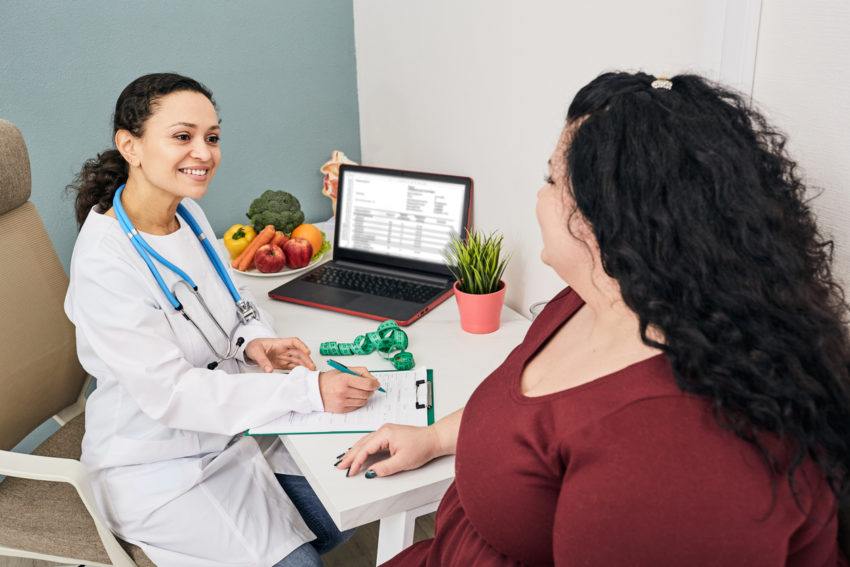
Share On Social!
A healthy diet is critical for the wellness of Latinos and all people.
Yet we know that fast-food options outnumber healthier options like supermarkets and farmers’ markets in many Latino neighborhoods. This lack of healthy food access results in overconsumption of unhealthy foods and higher obesity risk.
Now the lack of diversity among registered dieticians is making it harder for Latinos to get knowledge and resources for a healthy diet, according to The New York Times.
In fact, Latinos make up only 12.7% of registered dieticians, according to Zippia. That is less than the 18.5% Latino share of the U.S. population.
“It’s really a no-brainer that we need to consider the communities we serve,” said Doug Greenaway, president of the National WIC Association, according to Fern’s AG Insider. “We’ve been pushing the envelope, to change the landscape of nutrition and the dietetic community, but that’s a really hard thing to do.”
How a Lack of Diversity Among Registered Dieticians Impacts Latinos
Fern’s AG Insider reports that Whites make up 71% of U.S. registered dieticians.
“In the U.S., the field of dietetics and nutrition — and, accordingly, the corps of professionals who shape how Americans understand dietary health, in part by helping draft the national dietary guidelines — has a diversity problem,” according to the report.
The lack of dieticians of color is a problem that food experts are starting to recognize.
It also goes beyond representation. It affects American understanding of healthy eating, the nutritional recommendations in the Dietary Guidelines for Americans, and the federal food assistance programs like SNAP and WIC that serve many Latino families, according to Evelyn Crayton, president of the Academy of Nutrition and Dietetics, a national organization of food and nutrition professionals.
“The people at the federal level making these policies, they’re part of this structural issue,” Crayton said. “They don’t look like the people on reservations, or the people living in urban communities.” 
Moreover, obtaining dietician education for students of color is another barrier.
Upcoming changes to the eligibility requirements for becoming a registered dietitian — starting in 2024, a master’s degree will be a prerequisite for taking the qualifying exam — will make it tougher to enter this field.
“Unpaid internships and high tuition costs create barriers to entry that have made the field an increasingly elite profession,” according to Fern’s AG Insider.
Another example is the MyPlate dietary guideline.
Most recipes in the MyPlate app come from “American” foods that are mainly from white communities.
There are only 125 “Latin American/Hispanic” recipes. Even these are not always culturally relevant, such as the “skinny pizza” — pizza toppings on a tortilla — as a notable example.
“When I was studying nutrition, I thought MyPlate was fabulous; unlike the food pyramid [which preceded it], it would actually show people what to eat,” said Kameron Rowe, a New York-based nutritionist. “But when I started thinking more critically about it, I realized a lot of the recipes don’t make the most sense for people who don’t eat a standard American or Eurocentric diet.”
Latinos and the Need for Nutrition
The need for more Latino registered dieticians isn’t the only nutrition issue for Latinos.
When it comes to healthy eating, Latinos face systemic inequities and barriers to accessing nutritional food.
Food insecurity is prevalent in the United States, especially in Latino and Black communities.
Latino and Black households are more likely to suffer food insecurity (16.2% and 21.2%, respectively) than the national average (11.1%), according to USDA data.
This contributes to Latino adults have higher obesity rates than their white peers (47% and 37.9%). Latino children have higher rates, too (20.7% and 11.7%).
This, in turn, leads to disparities in diabetes and risk for COVID-19, heart disease, certain cancers, and other health conditions. Addressing the root causes, such as improving access to healthy food, can help address obesity.
“The bottom line is: Obesity rates are far too high,” said Dr. Amelie G. Ramirez, director of the Salud America! program at the Institute for Health Promotion Research at UT Health San Antonio. “People of color, and those furthest from economic opportunity, are at greatest risk. That’s why we need greater diversity in healthcare settings.”
How Can We Increase the Number of Latino Registered Dieticians?
Morgan McGhee, director of school nutrition leadership at FoodCorps, a nonprofit that promotes healthy eating in school meal programs, recommends getting more people of color into the positions that have the power to shift direction, as well as more students of color into dietician education, according to Fern’s AG Insider.
For example, the Academy of Nutrition and Dietetics has scholarships and grants for aspiring registered dietitians of color.
But McGhee also notes the underlying need for systemic changes for diverse representation among registered dieticians.
“With all the reckoning the U.S. has had over the past two years, a lot of the conversation has turned to, what do we mean by representation and diversity, and what do we mean when we talk about the ‘American diet’?” she said, according to Fern’s AG Insider. “It’s great to have all these different organizations, but my question is, who is at the table creating policy? True equity is not having Black organizations and Latino organizations, but building together, collectively.”
How Can You Make Systemic Changes for Better Latino Nutrition?
Experts urge “very intentionally” including cultural sensitivity in nutrition-education programs, including those for SNAP and WIC, according to Fern’s AG Insider.
You can also download a Salud America! Health Equity Report Card!
The report card shows many local children live in food deserts, have low food access, and get SNAP food benefits. Then you can compare it to your state and to the country.
Email your Health Equity Report Card to community leaders and share it on social media. Then use it to make the case to address food insecurity and nutrition security where help is needed most!
Explore More:
Healthy FoodBy The Numbers
1
Supermarket
for every Latino neighborhood, compared to 3 for every non-Latino neighborhood



